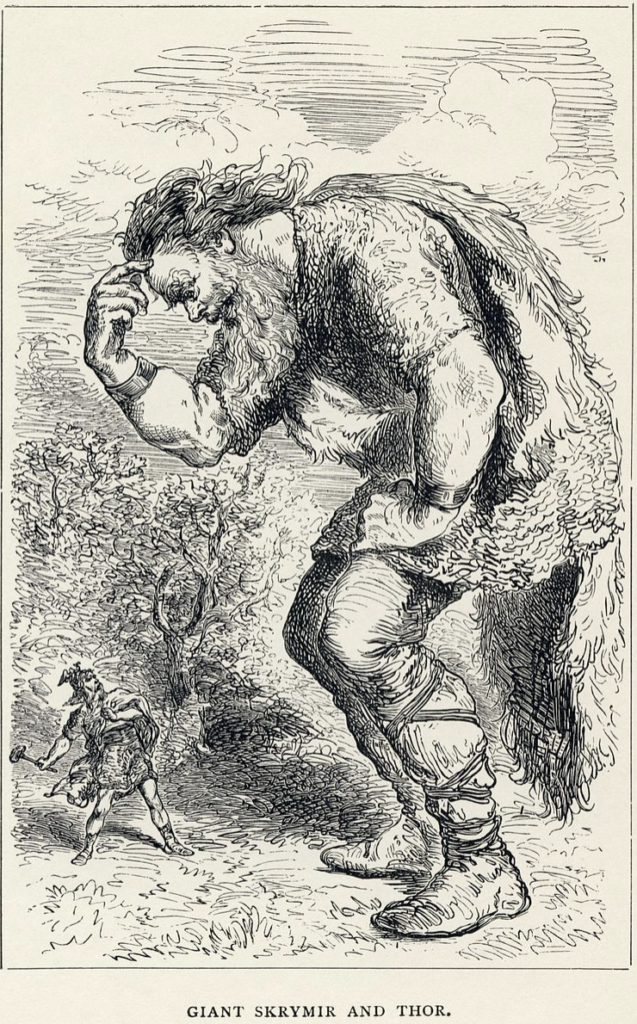The article below, originally published in 1929, explains how Thursday was named after the God of Thunder, Thor.
Thursday – Day of Thor
The fifth day of the week was sacred to the worship of Thor, the God of Thunder, and was known by the Saxons as Thor’s Daeg or Thursday.
Thor was one of the most important of ancient deities and was widely worshipped in Northern Europe. He was the god of civilization, with the strongest and mightiest power at his command – the lightning and the thunderbolt which crushes and splinters whatever offers resistance, but which also brings with it fruit-producing rain.

Although Thor was believed to be the protector of the life and property of all the people, he was the special friend of peasants. For this reason temples were erected to him in the rural districts as well as in the cities. Most of these rude temples were fashioned of wood and the greater number of them were destroyed during the reign of King Olaf of Norway, who, according to tradition, forcibly converted his subjects and made a wholesale destruction of the Pagan temples and shrines.
Yule
The sincere belief in the divinity of Thor was evidenced in the life of the people by the fact that they never failed to invoke him before undertaking a task. Thor’s special favors were sought at Yuletide, his principal festival, when it was customary to burn a great log of oak, his sacred tree, as an emblem of the warmth and light of Summer which would soon come to drive away the darkness and cold of the Winter.
Thor’s day was also the most important week day in all legal questions; the courts were opened on this day and Thursday is the most common court day even now. The weekly celebration in memory of the naming of Thursday for Thor was one of the most popular ancient rural festivals, when all the people of the village reverently paid tribute to the god whom they worshipped as their protector against the destructive power of the thunderbolt.
Thor’s Hammer
Thor bore many points of resemblance to Jupiter, the Roman thunder-god. He was the proud possessor of the magic hammer, Mjolnir, the northern emblem of the deadly thunderbolt and, like Jupiter, used it freely when warring against his enemies, the giants.
As this huge hammer was usually red hot, the god had an iron gauntlet called Jarngreipr, which enabled him to grasp it firmly and hurl it very far, his strength, which was already remarkable, being always doubled when he wore his magic belt called Megingjord.

Thor’s hammer was considered so very sacred by the ancient northern people that to them the sign of this weapon had the same meaning as the sign of the cross later had to the Christians. The sign of the hammer was made over the newly born infant when it was christened and given a name.
The hammer was used to drive in boundary stakes to hollow the threshold of a new house, to solemnize a marriage and to consecrate the funeral pyre upon which the bodies of heroes were burned, together with their weapons and steeds and, in some cases, with their wives and children.
Features
Thor is often pictured in old Saxon drawings as a man of middle age, with glowing red hair and beard from which in moments of anger, sparks fairly flew. Since red was his favorite color, brides invariably wore red, which was considered emblematic of love. For the same reason betrothal rings in the north were set with red stones, while gifts to the bride sometimes bore a touch of red.
In Sweden Thor was supposed to have worn a broad-brimmed hat, and hence the storm clouds in that country are known as Thor’s hat, a name given to one of the principal mountains in Norway.
Source: Evening star. (Washington, D.C.), 17 Feb. 1929.

